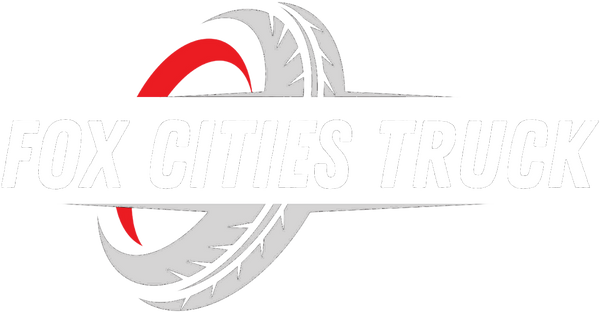
Signs You Need New Truck Suspension Parts
Share
Introduction
Have you ever felt like your truck is bouncing more than usual, or noticed that your tires are wearing out too fast? You're not alone. Just like any hardworking part of a vehicle, truck suspension parts wear out over time. Ignoring these signs can turn a smooth ride into a bumpy, expensive problem. But don't worry—we're here to help you figure out what's going on underneath your truck.
Before we dive into the details, here's a quick table to guide you through what we’ll cover.
What Is a Truck Suspension System?
Think of your truck's suspension as its legs. It keeps your ride steady, absorbs bumps, and makes sure your tires stay in contact with the road. The suspension system includes shocks, struts, springs, control arms, and other parts that all work together to give you a smoother and safer drive.
Why Suspension Health Matters
A healthy suspension system isn't just about comfort. It plays a big role in handling, braking, and safety. When your truck suspension parts are worn or damaged, they can mess with your ability to control the vehicle—especially when carrying heavy loads or driving on rough roads.
Sign #1: Excessive Bouncing
Ever feel like your truck just won’t stop bouncing after hitting a bump? That’s a classic sign that your shocks or struts are worn out. If your truck keeps bobbing up and down instead of stabilizing quickly, it's time to check your suspension.
Sign #2: Uneven Tire Wear
Take a look at your tires. If the tread is wearing out unevenly, your suspension might not be holding the truck level. This leads to certain tires taking more of the load than others, and it's a red flag that you need new truck suspension parts.
Sign #3: Steering Problems
Is your steering feeling loose or stiff lately? That could be due to bad suspension components. Faulty control arms, ball joints, or bushings can affect how your truck steers, making it harder to stay in control—especially around curves or during sudden maneuvers.
Sign #4: Truck Pulls to One Side

When you're driving straight and your truck veers off to one side, it's not just annoying—it’s potentially dangerous. While alignment might be to blame, worn suspension parts like control arms or bushings can also cause this issue.
Sign #5: Dipping or Nose Diving
Braking should bring your truck to a smooth stop. But if the front end dips hard when you brake, your shocks or struts might be worn out. This not only affects comfort but also increases stopping distance, which is a serious safety issue.
Sign #6: Oily or Damaged Shocks
Pop the hood or take a look under the wheel wells. If you notice oil on the shocks or struts, that’s a sign they’re leaking and not doing their job. Leaky shocks lose their ability to dampen bumps and need replacing.
Sign #7: Unusual Noises
Clunking, creaking, or rattling sounds when driving over bumps or turning the wheel? That could be the sound of worn-out suspension bushings, ball joints, or control arms. These noises are your truck's way of saying, “Hey, check under here!”
Sign #8: Poor Ride Comfort
When your once-smooth ride starts feeling like a rollercoaster, something’s off. If you're bouncing more, feeling every bump, or getting tossed around in your seat, your suspension isn't doing its job anymore.
How Suspension Affects Towing
If you use your truck for towing, suspension health is even more critical. A weak suspension can cause trailer sway, poor braking, and uneven weight distribution. Always check your truck suspension parts before hauling heavy loads.
When to Replace vs Repair Parts
Sometimes, a simple bushing replacement will do. Other times, you’ll need new shocks, springs, or even an entire suspension kit. If your truck is older or has high mileage, replacing the parts might be more cost-effective in the long run.
Choosing the Right Truck Suspension Parts
Not all parts are created equal. Stick to trusted brands that fit your truck's make and model. Whether you're looking for durability, performance, or just a smooth daily drive, make sure your new truck suspension parts match your needs.
DIY or Mechanic: What’s Best?

If you’ve got the tools and know-how, replacing parts like shocks or sway bar links can be a weekend project. But for more complex jobs—like control arms or coil springs—visiting a trusted mechanic is the smarter (and safer) option.
Final Thoughts
Just like your legs get tired after a long day, your truck's suspension needs rest and care too. Paying attention to early signs and replacing truck suspension parts when needed can save you from costly repairs—and even accidents—down the road.
So, the next time your truck feels “off,” don’t just turn up the radio and hope for the best. Listen to your ride. It might be telling you something important.
FAQs
1. How often should I check my truck suspension parts?
It’s a good idea to inspect your suspension every 12,000 to 15,000 miles or during regular service intervals.
2. Can bad suspension parts affect fuel efficiency?
Yes, worn suspension parts can lead to uneven tire wear and poor alignment, both of which can reduce fuel efficiency.
3. What’s the average lifespan of truck shocks or struts?
Most shocks and struts last around 50,000 to 100,000 miles, but it varies based on driving habits and road conditions.
4. Is it safe to drive with worn-out suspension parts?
While your truck may still move, driving with bad suspension can compromise handling and braking, making it unsafe—especially at high speeds or when towing.
5. How do I know which suspension parts to replace?
Start with a professional inspection. They’ll identify whether you need new shocks, struts, control arms, or other parts, depending on the wear and tear.
